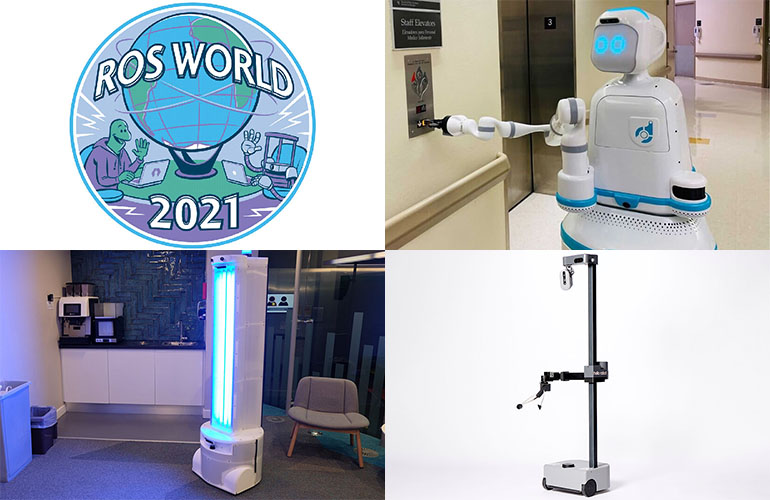|
Listen to this article  |

Academics across the world are working every day to create new technologies. Their achievements push the robotics industry forward, but bringing new technology from the lab into the real world is a challenge of its own.
This was the topic of discussion during the ROS World 2021 panel “From Academia to Start Up.” The panel was moderated by Brian Gerkey, co-founder and CEO of Open Robotics, and featured Charlie Kemp, co-founder of Hello Robot, Andrea Thomaz, co-founder and CEO of Diligent Robotics and Conor McGinn, co-founder and CEO of Akara Robotics.
The panel can be watched in the video below.
Kemp will be a keynote speaker at the Healthcare Robotics Engineering Forum on May 10-11 at the Boston Convention and Exhibition Center. Gerkey will be a keynote speaker at the Robotics Summit and Expo co-located with the Healthcare Robotics Engineering Forum.
Here are three tips the panel had for making the jump from academia to a robotics startup.
Take advantage of the right opportunity
Academia lends itself well to startups. Academics are already used to trying different solutions over and over again, and they’re used to things not working out perfectly from the beginning.
“I think the key thing that I’ve benefited from academia has been resilience,” McGinn said. “Anyone who’s building robots knows, especially in the early days, you fail more often than you succeed.”
However, finding the right time, and the right startup, is crucial to your success.
“People should be opportunistic, because I do think that there’s a special time and place for a startup and whether it’s a match for you,” Thomaz said.
Plan your software carefully
When you’re building a robot, you can use open-source software, proprietary software from a third party or something you’ve built yourself.
“There’s a build versus buy that you go through for anything,” Thomaz said. “A lot of times it’s down to whether we have the level of control we want.”
Open-source software allows your customers to have more control over the robot they buy and how they use it.
“Enabling people and empowering people to add hardware and software to do what they want is really important to use,” Kemp said. “And we see it as important to our community.”
Thomaz mentioned investors will likely be interested in looking at your entire code stack to make sure there will be no problems with IP moving forward.
Find the right people to work with
At times, investors may not understand how your academic experience will translate to the business world.
“You walk into a room with venture capitalists and all of the sudden your credentials don’t seem to have the weight they used to have,” Kemp said. “It’s a new world.”
Knowing how to present your company and product to investors, and finding the right investors is crucial.
“As a professor, you are a little startup. You’ve had to fundraise, you’ve had to recruit, you’ve had to sell the vision of your lab,” Thomaz said. “So I think you have to look for the investors that understand.”
Product focus
It’s also important to be willing to change your product to better fit customer needs. As Thomaz pointed out, her company’s Moxi robot was originally intended to have a mobile manipulator that can perform several different tasks. Her team changed direction, however, when they narrowed their focus to fixing one customer problem at a time.
“We had grand visions of the millions of things that mobile manipulators are going to be out in the world doing,” Thomaz said. “And then you get to that long tail of reliability. And you’re like, actually, we to to really just focus on one thing first and then build from there.”
Today, Moxi’s manipulator helps it to open doors and elevators, and waves at people passing by.
Credit: Source link


Comments are closed.